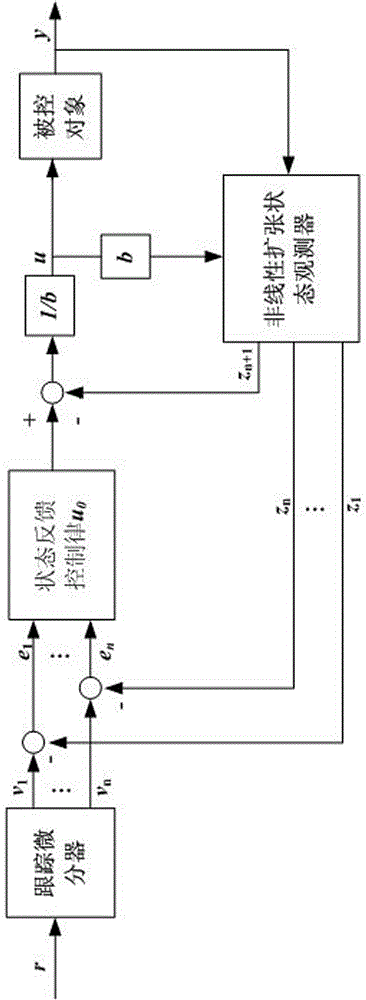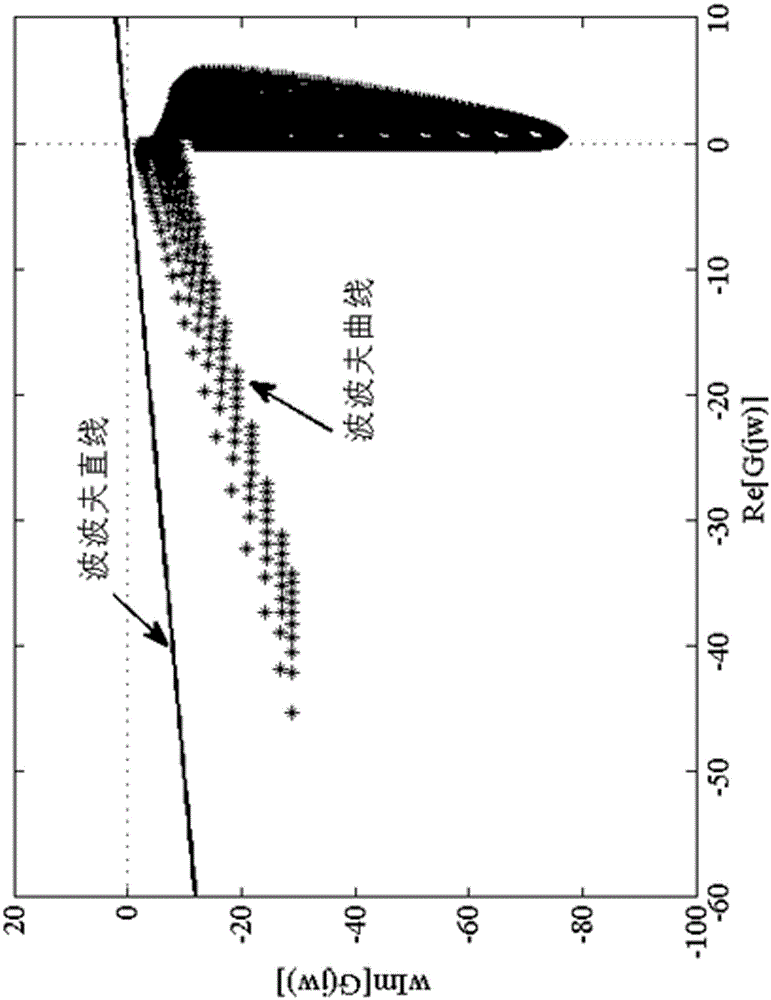Stability determination method of non-linear active-disturbance-rejection control system
A technology of active disturbance rejection control and system stability, applied in the field of automation, can solve problems such as complex derivation process, complex system motion, and difficulty in popularization
- Summary
- Abstract
- Description
- Claims
- Application Information
AI Technical Summary
Problems solved by technology
Method used
Image
Examples
Embodiment Construction
[0110] Combine below Figure 1-Figure 3 And embodiment further illustrates the present invention.
[0111] Assuming that the input r of the tracking differentiator in A1 is 0, then the output v of the tracking differentiator i (i=1,2,...,n) are all 0;
[0112] Taking the stability analysis of the second-order nonlinear active disturbance rejection control system composed of the second-order controlled object and the nonlinear active disturbance rejection controller as an example, the application process of the present invention in practice is described.
[0113] Stability Analysis of Nonlinear Extended State Observer Based on Routh Criterion.
[0114] Taking a second-order linear steady plant as an example, its mathematical model is as follows:
[0115] x · 1 = x ...
PUM
 Login to View More
Login to View More Abstract
Description
Claims
Application Information
 Login to View More
Login to View More - R&D
- Intellectual Property
- Life Sciences
- Materials
- Tech Scout
- Unparalleled Data Quality
- Higher Quality Content
- 60% Fewer Hallucinations
Browse by: Latest US Patents, China's latest patents, Technical Efficacy Thesaurus, Application Domain, Technology Topic, Popular Technical Reports.
© 2025 PatSnap. All rights reserved.Legal|Privacy policy|Modern Slavery Act Transparency Statement|Sitemap|About US| Contact US: help@patsnap.com



